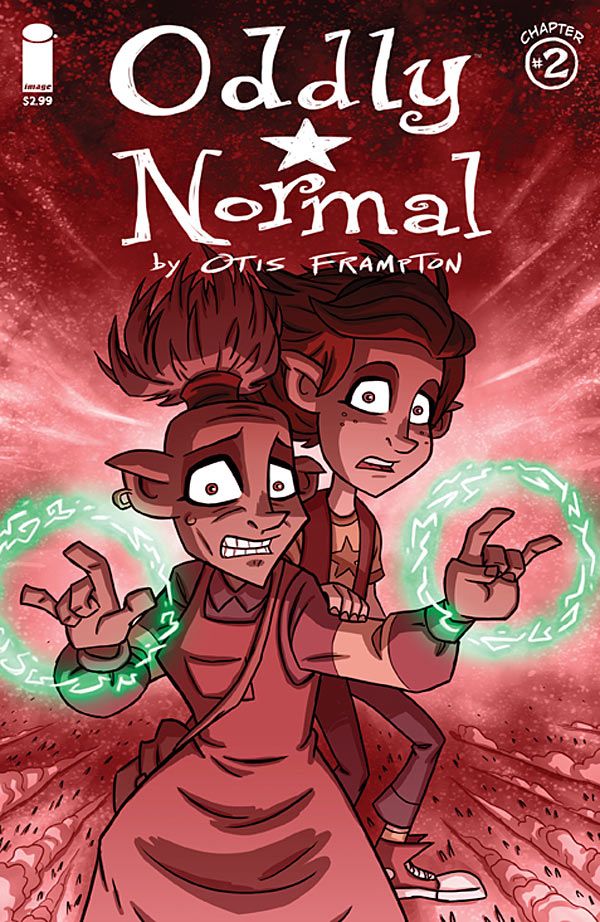"Oddly Normal" #2 by Otis Frampton picks up Oddly's story right after the cliffhanger of the first issue, when Oddly's words result in the unexpected disappearance of her parents and their house. Oddly's story conforms nearly into both fantasy and coming-of-age story norms -- her parents need to be gotten out of the way before her adventure and growth can commence.
Immediately, Frampton introduces a new character that may be able to assist Oddly. Her aunt is a witch, like Oddly's mother, and lives in the mysterious and magical world of Fignation. The aunt is a good example of the fantasy genre's version of the absent-minded professor archetype: she's a skilled witch but charmingly eccentric and just a wee bit fluffy-minded. She's also very talkative, and her continuous monologue directed vaguely in Oddly's direction is punctuated by folksy endearments like calling Oddly "my little lemon pie". Auntie's wide eyes and grin also reinforce the personality traits Frampton reveals through speech patterns and dialogue. The reaction shots for Oddly as she tries to get in a word edgewise while her aunt rambles on are excellent. The reaction panel from a bystander walking her dog is also cartoonishly funny.
Frampton's coloring, assisted by Boatwright and Mead, lightens the mood and tone of the story. In gloomier hues, Oddly's story would be scarier and more threatening, since she's now homeless and parentless, if only temporarily. Frampton gives each panel a wash of a dominant color, choosing cool tones of green, violet, blue, and warm magenta. The color intensities are just a shade darker than pastels. Frampton's rainbow approach is upbeat, matching the mood and sweetness of breakfast cereal, but with more to chew on than slogans. The full rainbow of colors and the detailed background on the last page is also effective, even though lining up Oddly's first glimpse of Fignation for the cliffhanger page is a predictable move.
Due to Frampton's liberal use of panel space, the story only progresses slightly in the second issue. Considering all the mentions of Fignation in the debut issue, the plot is proceeding too slowly for readers picking up single issues, although it will read fine in trade. Also, on a classification note, "Oddly Normal" is a middle grade comics story. So far, neither the themes of the humor have a lot of layers or internal complexity, but story flows easily and the suspense-building is solid.
Frampton expertly arranges camera angles, panel borders and backgrounds to give maximum surprise value to Oddly's realization that she's not in a dream when she beholds the shocking appearance of Lyman C. Preston, a resident of Fignation.
"Oddly Normal" #2 is cute and fun, but falls short on plot progress. Hopefully, in future issues, Frampton can pack in more action while not sacrificing any of the smoothness of his pacing. Oddly does finally enter Fignation, and Frampton has built up enough interest and plot tension that readers who were hooked by the first issue will still be hooked.

